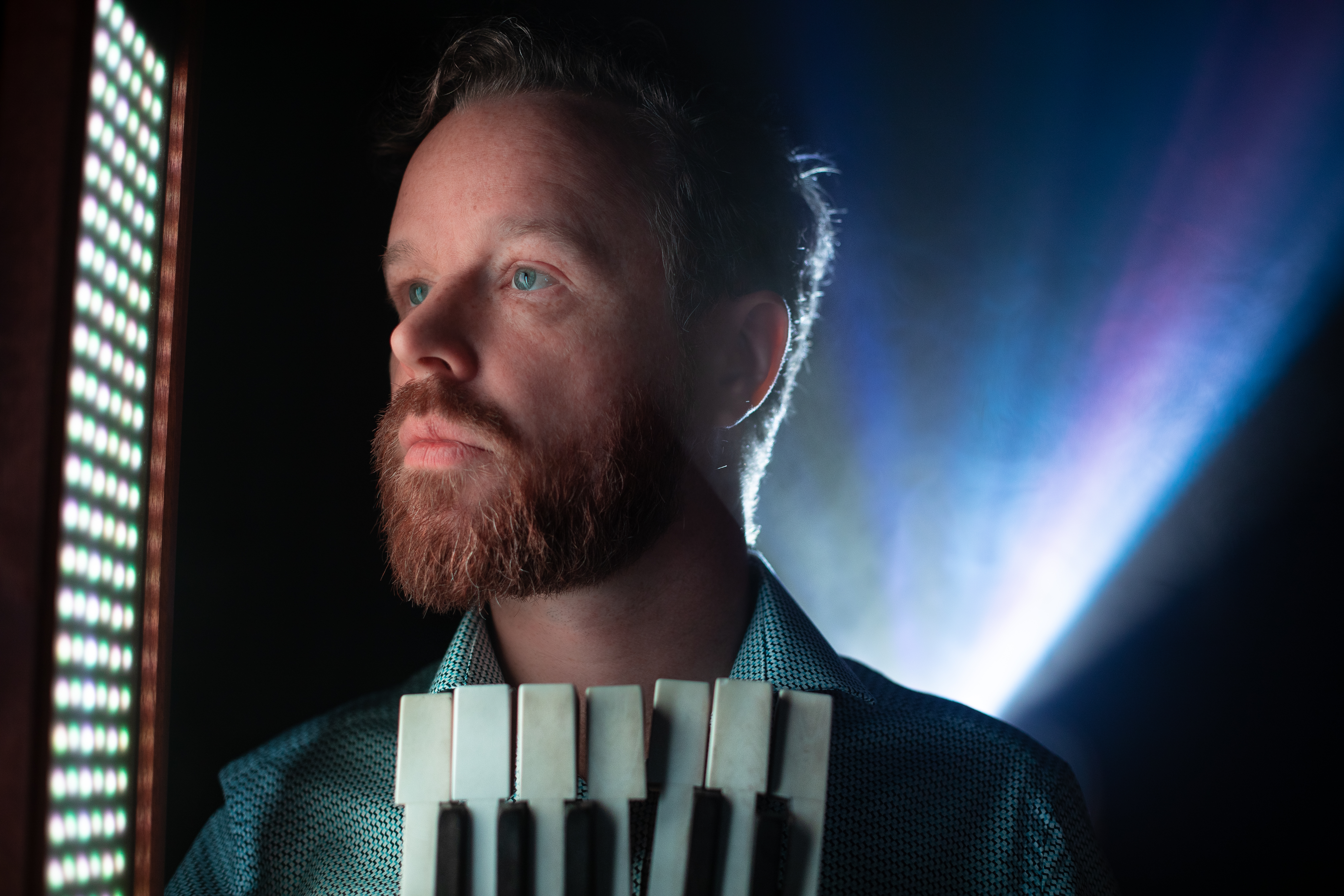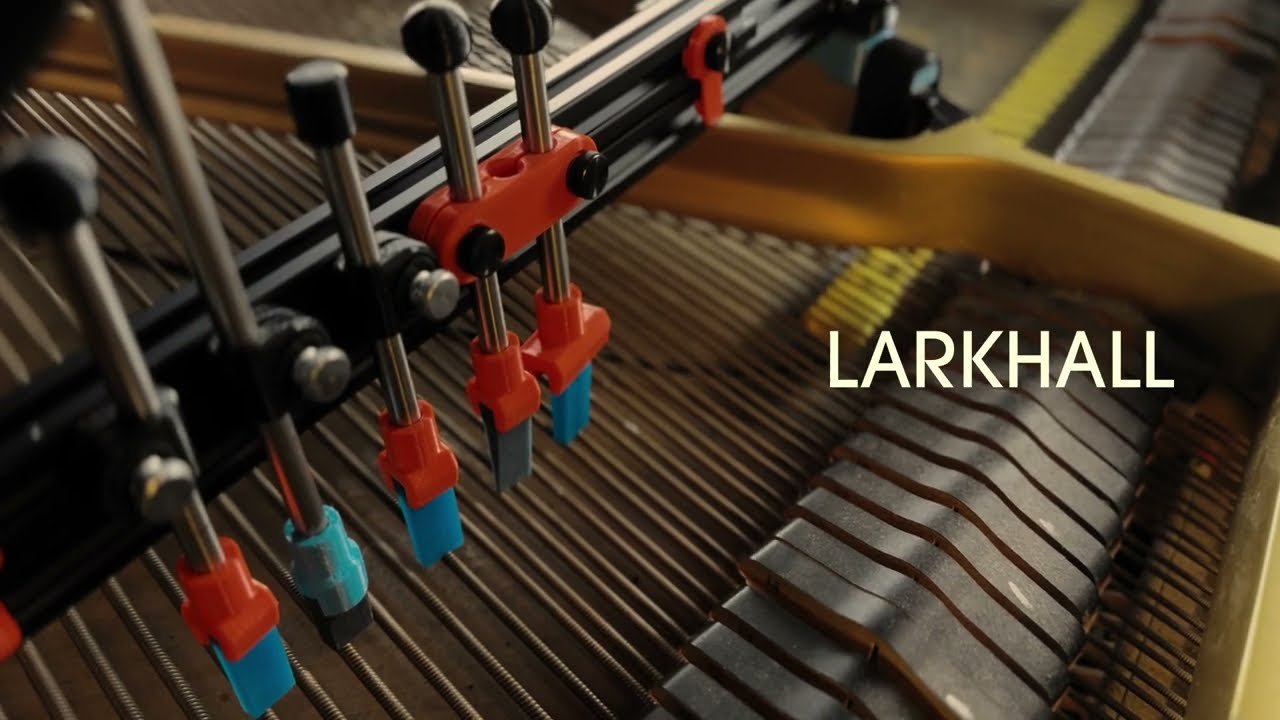
LABS
WORKSHOPS

Alongside performances, I frequently run “Intro to Creative Coding” and “Creating Live Visuals for Music Performance” workshops where young people and adults can have a first taste of using free software to create live reactive visuals, without having to write a line of code.
These workshops take a hands-on, dive-right-in approach to creative coding. From the very beginning, participants learn by doing, making simple, visual, interactive scenes right away. Using the same software I use for my own live visuals, you’ll make things spin, glow, warp, and sparkle as you learn about rendering, lighting, textures and more.
The workshop is suitable for anyone comfortable with basic computer skills, i.e. opening and saving files, typing, and using a mouse/trackpad.
An alternate version of the workshop is available for SEND students in which we create collaboratively and computer skills are not required. Please get in touch to discuss your students’ specific needs.
What is it?
- This cross-disciplinary digital-making workshop takes a hands-on approach, diving in to creating live animations with shapes that spin, warp and pulse in response to music and sound. Working with a node-based programming environment, students build a network of operators to achieve their vision without writing a line of code. Working in pairs, students take turns creating or actively observing in order to maximise focus and learning.
Who’s teaching it?
- Charlie Hooper-Williams is an award-winning composer, pianist and one of the software developers of the global top-10 app Shazam. His performances as Larkhall combine piano with live-generated reactive visuals, posing the question: What if you could see music? Having achieved 250k streams, radio play on BBC Radio 3, Scala, Times Radio as well as editorial support from Apple Music and Pandora, Larkhall’s “vividly beautiful” “music to soothe the soul” is “unmissable… a must-see show”.
Subjects
- Computing
- Software Engineering
- Animation
- Music Technology
- IT
- Video Games
- Mathematics
- Design & Technology
Participants
- Up to 16 per session, usually working in pairs.
Ages
- 13-18 or University
Length
- 120 min (60 min instructor-led workshop, 60 min independent exploration with opportunity to ask questions)
Requirements
- One computer for every pair of students.
- Pre-downloading, installing and registering the free software (instructions and link provided on registration). Software runs on MacOS and Windows.
- Demonstration screen/projector with HDMI input.
Prerequisites
- Participants need basic computer skills (open/save a file, attach a document to an email) but do NOT need prior coding experience.
- Students who have learned some coding already will find this a change as we do not type any lines of code in the workshop.
Outcomes
- Finished audio-reactive scene (as shown at the top of this page) which can be exported and shared
- Increased understanding of software engineering in a live context
- Confidence in picking up new technical skills
- Experience with digital storytelling
- Fun!
Transferable Skills
- Problem-solving
- Critical thinking
- Creativity within technology
- Interdisciplinary
- Communication skills
- Technical proficiency
- Adaptability and Flexibility
- Research and Information Literacy
- Time Management and Organisation
- Resilience and Perseverance
Add-ons
- Can pair with a 20-60 min concert demonstration showcasing Larkhall’s unique pairing of piano music with live generated visuals. This can include student work, and there is no maximum audience size.
Download PDF brochure: Intro to Creative Coding
Download PDF brochure: Creating Live Visuals for Music Performance
“A huge thanks for all your help yesterday. The feedback was fantastic. Teachers praised and appreciated the atmosphere created regarding access and the space feeling right for the students coming in.”
OTTO

Otto is the name for my live visuals system. Because it listens and responds as I play, it feels more like playing with another person than following along to a machine; hence giving Otto a name. Otto’s listening system is built in Max/MSP using modules from IRCAM’s Antescofo project.
Otto and I create the visuals during my performances in Touchdesigner , which is a programming system built specifically for this purpose.
HARMONICS MACHINE

INFINITE RESONATOR
PEDALS & EFFECTS

In recordings and live performances I use some effects pedals on the piano.
First we have a tape delay simulator: the Strymon El Capistan , which gives a lovely warm analogue-sounding trail or echo on the piano sound.
From there we go into the Microcosm by Hologram Electronics . This brilliant pedal chops up the sound into thousands of small fragments each second, and uses those to make a granular cloud around the piano’s sound. It intelligently adapts based on what I’m playing. If you hear the sound of a distant orchestra accompanying me while I play, it’s probably this pedal.
Finally I use the Strymon Big Sky , which is one of the most powerful and flexible reverbs I’ve ever heard. It has shimmer and cloud effects that give an otherworldly, spacious sound to the piano.